Pakistani kheer is a creamy rice pudding also known as chawal ki kheer. This Pakistani kheer is slowly cooked at low flame for an hour or more until it gets the perfect thick texture. If a kheer is liquidy it’s not a kheer!
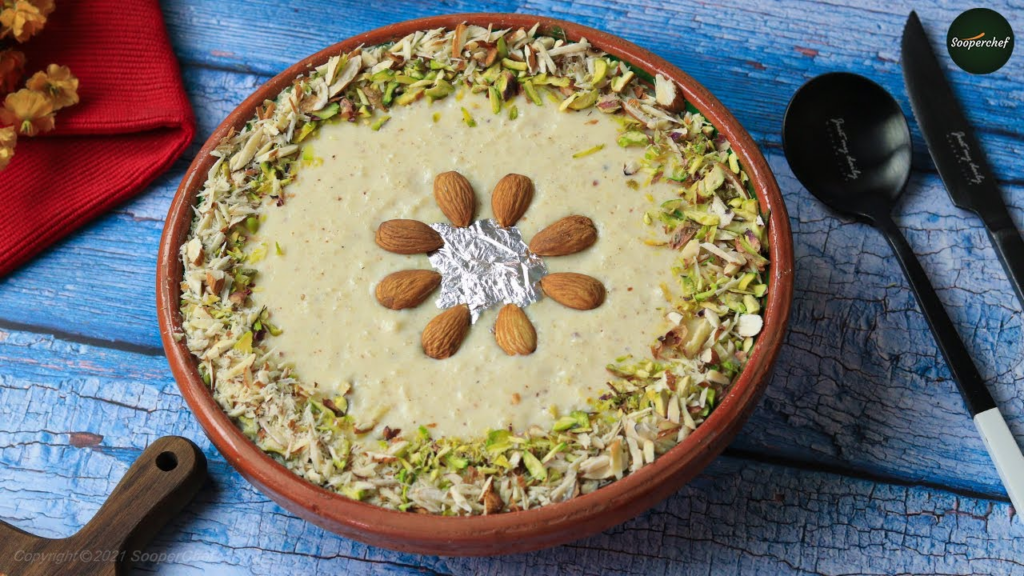
The simplicity of Pakistani classic kheer is in its ingredients and the warmth it brings makes it a classic comfort food. I’ll guide you through the process of crafting this Pakistani delicacy at home.
The luxury, creamy, and thick texture of this Pakistani kheer will readily melt in your mouth. This recipe is preferred as a dessert in Pakistan mostly at weddings, festive occasions, celebrations, dinner parties, lively weekends, and Eid desserts.
This desi dessert is beautifully served on a small plate made up of mud. This rice pudding recipe can be served warm or cold.
You might also like to try other traditional Pakistani dessert recipes like Halwa puri
WHY YOU WILL LOVE THIS RECIPE
- Simple Ingredients, Maximum Flavor: With easily accessible ingredients, this recipe doesn’t compromise on flavor. The combination of rice, milk, and sugar is a testament to how simplicity can be incredibly satisfying.
- Customizable Sweetness: You can adjust the sweetness to your liking. Whether you prefer a slightly less sweet dessert or an indulgent treat, this recipe allows you to adjust the sugar content to match your taste buds.
- Perfect Anytime Dessert: Pakistani Kheer is one of the easy desserts. Whether served warm on a winter evening or chilled during summer, it’s an all-season dessert that brings joy year-round. It is perfect for any occasion.
- Homemade Goodness: You should feel satisfaction while creating a traditional dish. This recipe provides the satisfaction of crafting a beloved dish in your kitchen, infusing it with love and care. The homemade Pakistani Kheer adds an extra layer of enjoyment to the overall experience.
HOW TO MAKE PAKISTANI KHEER
INGREDIENTS YOU WILL NEED
1. Basmati Rice: You will need 1 cup of Basmati rice; it adds a fragrant and distinct texture to the kheer, enhancing its overall appeal.
2. Whole Milk: You will need 1 liter of Whole milk, it contributes to the rich and creamy consistency, a key characteristic of authentic Pakistani Kheer.
3. Sugar: You will need 1 cup of sugar, it provides the necessary sweetness, and the quantity can be adjusted to suit individual taste preferences.
4. Cardamom Pods: You will need 5-6 cardamom pods to impart a warm and aromatic flavor to the kheer. Or you can replace it with ½ tsp of Cardamom powder.
5. Chopped Almonds and Pistachios: You will need ¼ cup of chopped almonds and pistachios to add a delightful crunch and nutty flavor, enhancing both texture and taste.
6. Rose water (optional): 1 tablespoon of rose water that gives Kheer a fragrant aroma and subtle floral flavor. Rose water is a traditional ingredient in many South Asian desserts which is used to evoke a sense of cultural authenticity and traditions.
HOW TO MAKE PAKISTANI KHEER: STEP BY STEP
Step 1: Rinse and Soak Rice
Start by rinsing 1 cup of Basmati rice under cold water until the water runs clear. After rinsing, soak the rice in water for approximately 30 minutes. This helps the rice absorb moisture, ensuring a tender texture in the final dish.
Step 2: Cook Rice in Milk
Heat 1 liter of whole milk in a stainless heavy-bottomed pot, on medium-high heat and let it come to a gentle simmer.
Crack open the cardamom pods and add to the milk. (Later, when the kheer is ready, you can easily remove the husks since we’re only utilizing 5 pods.)
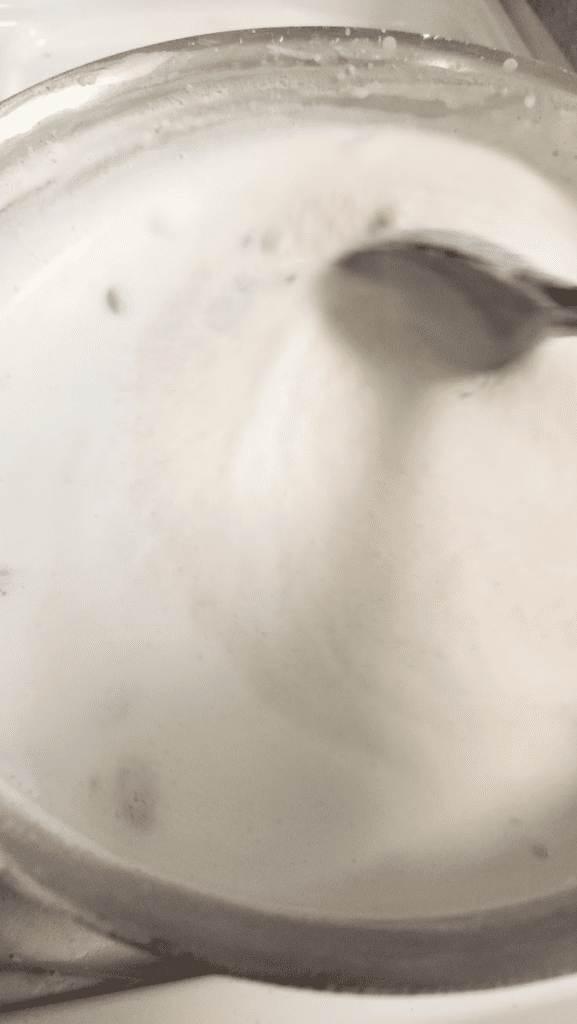
Now combine the soaked Basmati rice with the boiling milk. Over low to medium heat, let the mixture simmer, stirring occasionally to prevent the rice. Allow the rice to cook until it softens and the mixture thickens, which usually takes about 20-30 minutes.
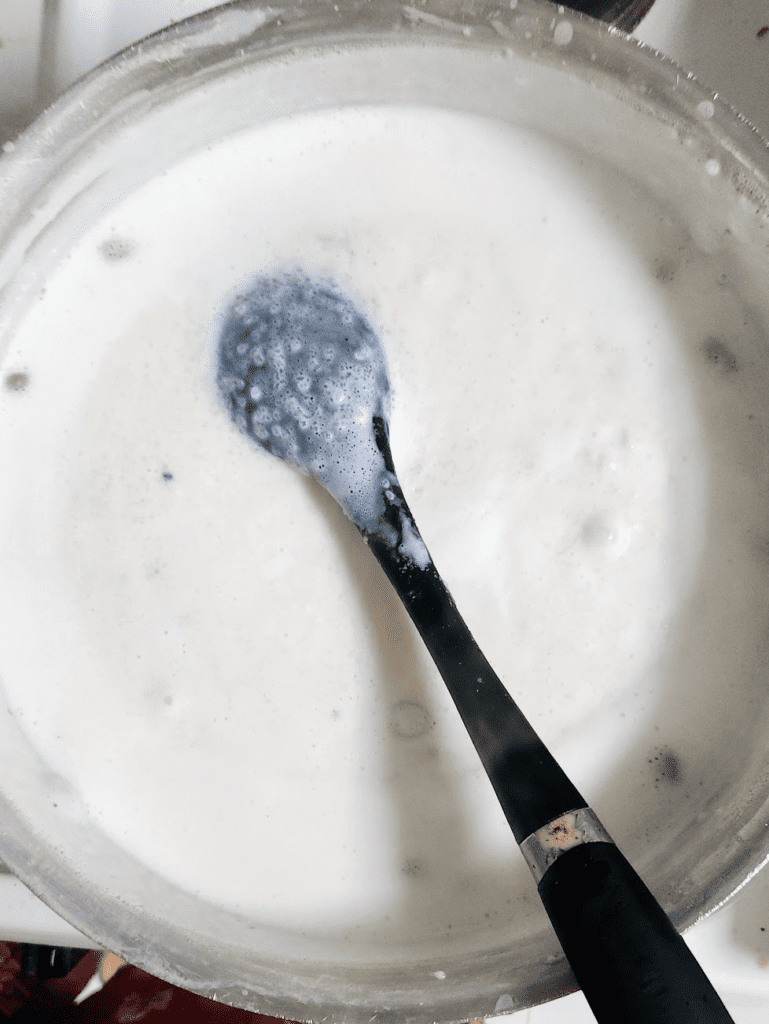
Step 3: Sweeten and Flavor
Once the rice is cooked, add 1 cup of sugar to the rice mixture. Stir well to ensure the sugar dissolves evenly.
Simmer the kheer on very low heat for 1 hour, stirring occasionally to prevent sticking to the bottom of the pot. It’s crucial to use a stainless steel pot for making kheer because non-stick pots may cause the milk to stick to the bottom and form a browned residue that gives kheer a burned taste.
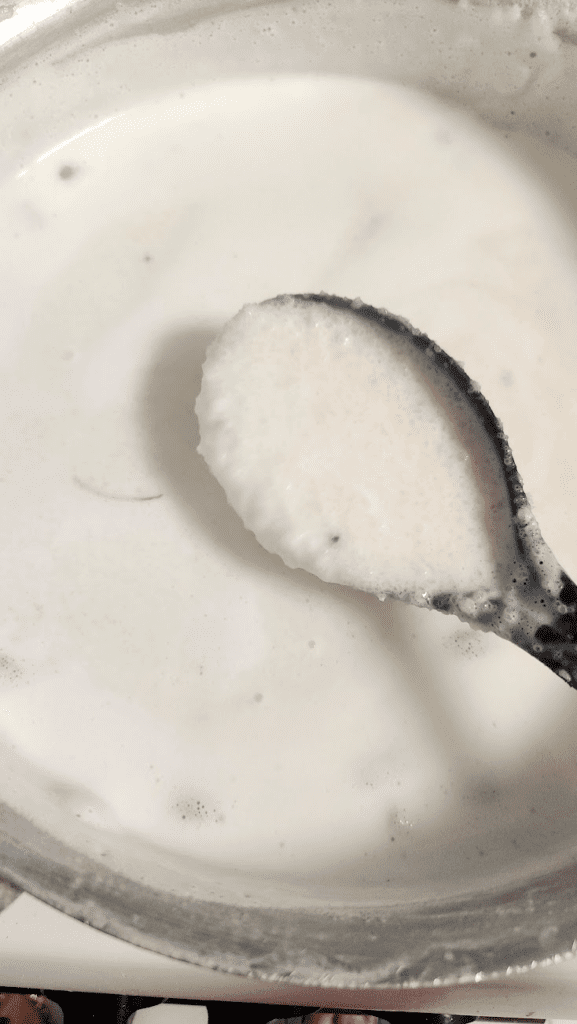
Continue cooking until the kheer reaches your desired consistency.
Optionally, add a pinch of saffron strands for an extra layer of flavor and a beautiful golden color.
Step 4: Garnish and Cool
To add a delightful crunch and nutty flavor, stir in 1/4 cup of chopped almonds and pistachios. Remove the pan from heat and let the kheer cool. Keep in mind that the kheer will continue to thicken as it cools, so factor this in when reaching your preferred consistency.
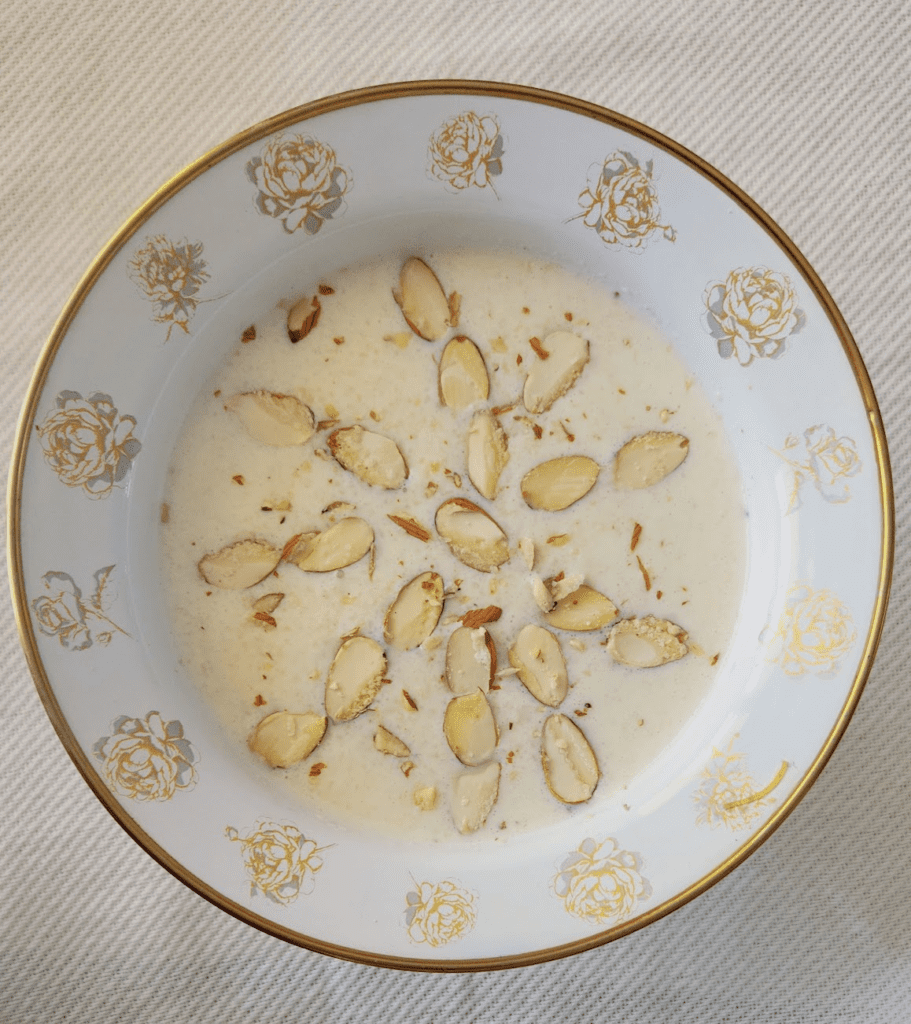
TEMPERATURE INSTRUCTIONS
Cook the Pakistani Kheer on low to medium heat to prevent sticking and ensure a smooth texture. Maintain a gentle simmer, stirring occasionally for even cooking. Adjust the heat as needed throughout the process, allowing the rice to absorb the milk’s richness without burning. This controlled temperature is key to achieving the creamy perfection of this traditional dessert.
CONFIDENCE TIPS
- Embrace the slow-cooking process, allowing the rice to gradually absorb the milk.
- Regular stirring is your secret weapon against sticking. By stirring consistently, you’ll achieve a lump-free and smooth kheer.
- Don’t hesitate to taste the kheer at different stages. Adjust the sweetness or cardamom flavor to match your preference.
- Keep an eye on the color and consistency.
STORAGE AND REHEATING
Store the kheer in an airtight container in the refrigerator. To reheat, add a little milk to maintain its creamy texture.
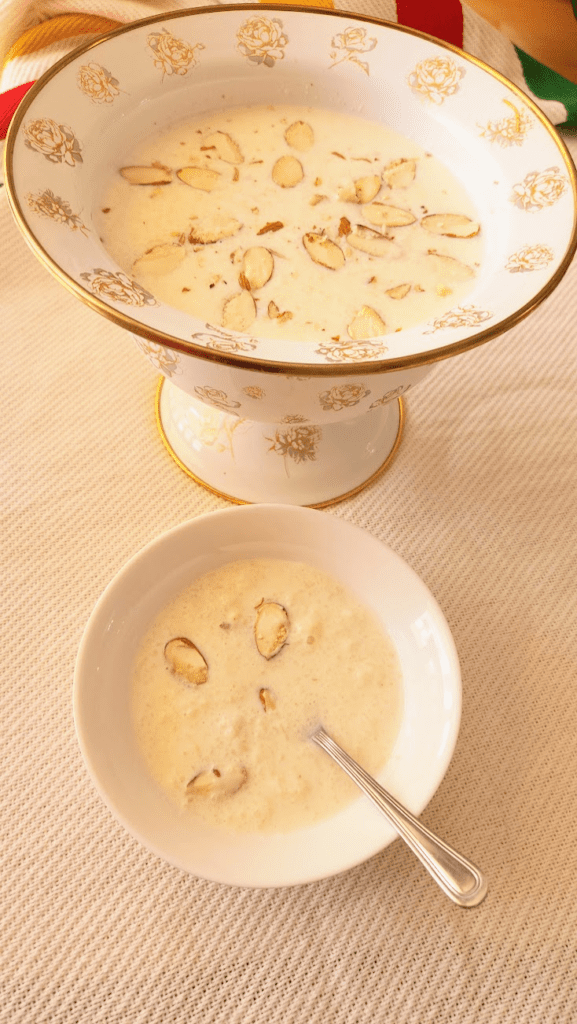
ADDITIONS
The traditional Pakistani kheer recipe, commonly prepared at home, typically consists of milk and rice. However, there are various ways to customize and enhance its flavor and texture. For a richer, creamier consistency, consider substituting sugar with condensed milk, which adds a velvety thickness to the dessert.
You can also add heavy whipping cream into the mixture which can further enhance its texture, resulting in a lusciously smooth finish.
Another option is to add 3-4 tablespoons of dried milk powder, which thickens the kheer and also gives a rich, indulgent flavor to the dish. These variations allow you to tailor the kheer according to your preferences, whether you prefer it silky-smooth or luxuriously thick.
Golden Raisin Sweetness: Introduce a handful of golden raisins for a delightful burst of natural sweetness and a contrasting texture.
Crushed Cardamom Seeds Intensity: For a more pronounced cardamom flavor, consider using crushed cardamom seeds instead of powder.
Nutmeg Infusion: Grate a small amount of nutmeg into the kheer during the final stages of cooking for a subtle nutty undertone. This addition complements the other flavors, creating a harmonious blend.
Coconut Essence: For a tropical twist, incorporate a hint of coconut essence during the flavoring phase. This addition imparts a mild coconut flavor, providing a unique variation.
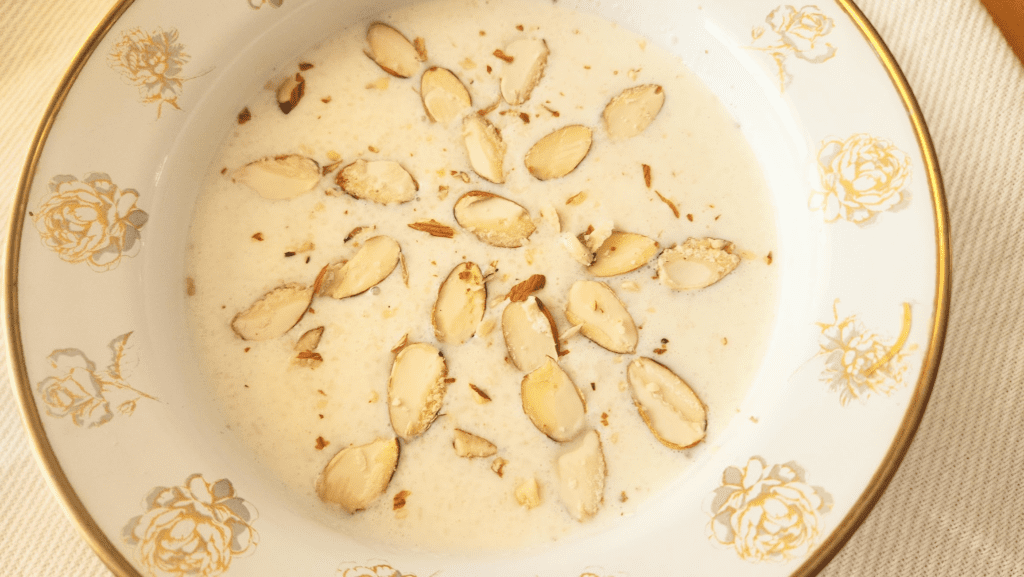
HOW TO SERVE
- Spoon the kheer into individual serving bowls, ensuring an even distribution of rice and nuts.
- Depending on the season or personal preference, serve the kheer either chilled or warm.
- In warmer weather, a chilled bowl provides a refreshing treat, while a warm serving offers comfort during colder days.
- Consider serving Pakistani Kheer alongside traditional snacks like pakora or as a sweet ending to a meal with biryani.
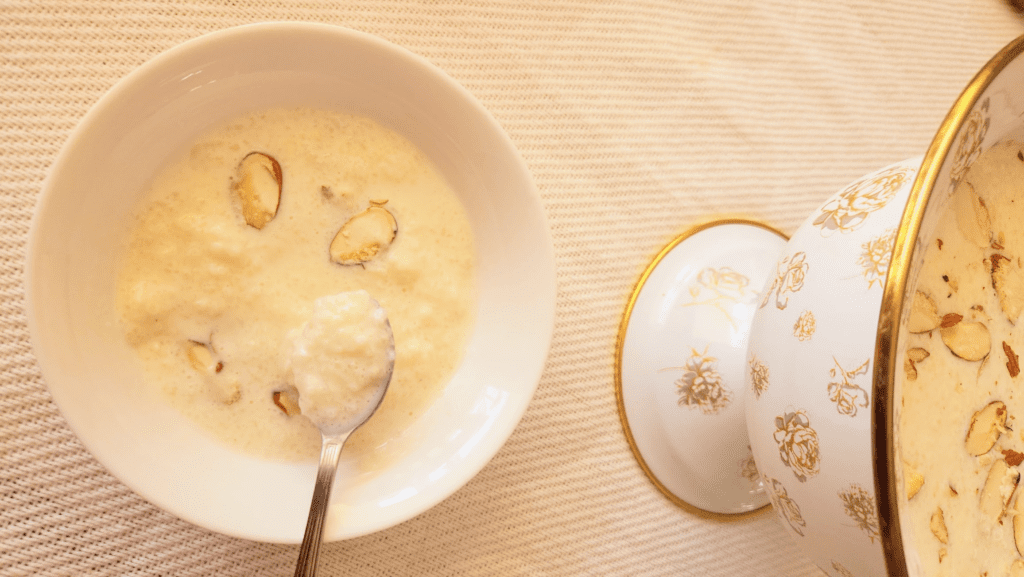
FREQUENTLY ASKED QUESTIONS
Can I use any type of rice for Pakistani Kheer?
Yes, while Basmati rice is traditional and preferred for its fragrance, you can experiment with other rice varieties. Keep in mind that the texture may vary slightly.
Is it necessary to soak the rice before cooking?
Soaking the rice is recommended as it helps it absorb moisture, resulting in a tender texture. However, if you’re short on time, you can reduce soaking time or skip it, but expect a slight change in texture.
Can I make Pakistani Kheer ahead of time?
Absolutely! Kheer often tastes better after sitting for a few hours or overnight in the refrigerator. Adjust the consistency with a bit of milk when reheating.
Can I use non-dairy milk for this recipe?
While traditional Pakistani Kheer uses whole milk, you can experiment with non-dairy alternatives like almond or coconut milk for a unique twist. Adjust the quantity as needed.
Is saffron necessary, and can I substitute it with something else?
Saffron adds a subtle flavor and color, but it’s optional. You can skip it or substitute it with a pinch of ground turmeric for color or leave it out entirely for a classic kheer.
How do I prevent the kheer from sticking to the bottom of the pan?
Regular stirring is key. Ensure you stir the kheer consistently, especially towards the end of the cooking process. Using a heavy-bottomed pan also helps distribute heat evenly, preventing sticking.
Authentic Pakistani Style Kheer Recipe (Rice pudding)
Equipment
- Heavy-bottomed pan (stainless steel preferred)
Ingredients
- 1 cup Basmati rice
- 1 liter Whole milk
- 1 cup Sugar
- 1/2 Cardamom powder
- 1 tsp Rose water (optional)
- 1/4 cup Chopped almonds and pistachios
Instructions
- Rinse and Soak Rice:· Start by rinsing 1 cup of Basmati rice under cold water until the water runs clear. · After rinsing, soak the rice in water for approximately 30 minutes. This helps the rice absorb moisture, ensuring a tender texture in the final dish.
- Cook Rice in Milk:· Heat 1 liter of whole milk in a stainless heavy-bottomed pot, on medium-high heat and let it come to a gentle simmer.Crack open the cardamom pods and add to the milk. (Later, when the kheer is ready, you can easily remove the husks since we’re only utilizing 5 pods.)· Now combine the soaked Basmati rice with the boiling milk. Over low to medium heat, let the mixture simmer, stirring occasionally to prevent the rice. Allow the rice to cook until it softens and the mixture thickens, which usually takes about 20-30 minutes.
- Sweeten and Flavor:· Once the rice is cooked, add 1 cup of sugar to the rice mixture. Stir well to ensure the sugar dissolves evenly. · Simmer the kheer on very low heat for 1 hour, stirring occasionally to prevent sticking to the bottom of the pot. It’s crucial to use a stainless steel pot for making kheer because non-stick pots may cause the milk to stick to the bottom and form a browned residue that gives kheer a burned taste.· Continue cooking until the kheer reaches your desired consistency. · Optionally, add a pinch of saffron strands for an extra layer of flavor and a beautiful golden color.
- Garnish and Cool:· Stir in 1/4 cup of chopped almonds and pistachios.· Remove from heat and let it cool; the kheer will thicken a sit cools.
Notes
- Adjust sugar to taste.
- Stir regularly to prevent sticking.
-
- The traditional Pakistani kheer recipe, commonly prepared at home, typically consists of milk and rice. However, there are various ways to customize and enhance its flavor and texture. For a richer, creamier consistency, consider substituting sugar with condensed milk, which adds a velvety thickness to the dessert. You can also add heavy whipping cream into the mixture which can further enhance its texture, resulting in a lusciously smooth finish. Another option is to add 3-4 tablespoons of dried milk powder, which thickens the kheer and also gives a rich, indulgent flavor to the dish.
- Calories: 150
- Total Fat: 5g
- Cholesterol: 10mg
- Sodium: 30mg
- Total Carbohydrates: 25g
- Protein: 3g
MORE RELATED RECIPE
Air Fryer Chocolate Mug Cake: A Quick and Easy Treat
25 Amazing Pakistani Desserts with Condensed Milk You Should Try
